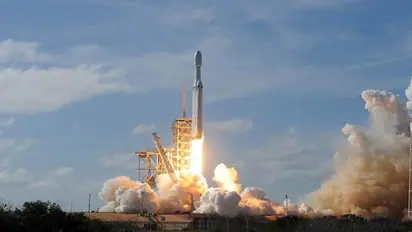China aims to start space travel by 2025, to charge at least $2,87,200 per seat

Synopsis
The China National Space Administration (CNSA) is planning to begin tourism flights to space by 2025 and is expected to charge passengers $287,200 to $430,800, around 2-3 million yuan per seat.
China is expected to send its first group of commercial passengers to suborbital space in 2025. Yang Yiqiang, founder of a government-backed firm looking into commercial usage of rockets, predicts that commercial space travel would be in "full flower" by 2027.
The 2.0 age, driven by applications and market pressures, has replaced the 1.0 period, which was characterised by foundational manufacturing and research and development (R&D), according to Yang in an interview with Global Times. The market should catch up to America's level of development in another ten years.
The majority of people may fly to space using suborbital flight, which is the most developed and practical kind of space travel, in Yang's opinion. Passengers would experience weightlessness for a brief period of time as they crossed the Kármán line, the line separating Earth's atmosphere from space, during the ten-minute voyage.
Also Read | Jupiter will be closest to Earth in 70 years on September 26; All about it
The first commercial suborbital space flight from China is anticipated to take off in 2025, with tickets allegedly costing between 2 and 3 million yuan (approximately $287,200 and $430,800).
Three different methods of space travel are currently being investigated, according to Yang Yiqiang, a senior rocket scientist and the founder of the Beijing-based rocket company CAS Space.
The first is entering the space station, which sets strict requirements on physical and psychological conditions of the tourists. The second takes tourists into space on a cargo aircraft used to lift the another spacecraft to release altitude. Virgin Galactic once announced these types of trips, priced at $450,000 per seat, according to media reports.
The third mode, according to Yang, and the one China will focus on, is suborbital space travel. This will be more suitable for most passengers.
An industry evaluation states that China had about 370 companies in 2021 that were focused on satellite manufacturing, rocket launching, and significant downstream satellite services. Chinese commercial players in the market are still quite small, and only a small portion of their rocket and satellite enterprises are profitable.
Also Read | NASA, Google collaborate to allow users to track air pollution at local level
India has also made hints that it may launch paying customers into space in the near future, while China plans to start commercial flights. Jeff Bezos and Richard Branson launched the space tourism race by travelling into space on company-developed rockets.